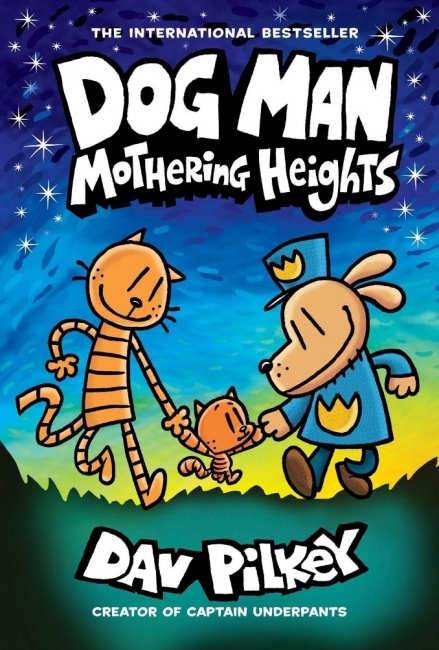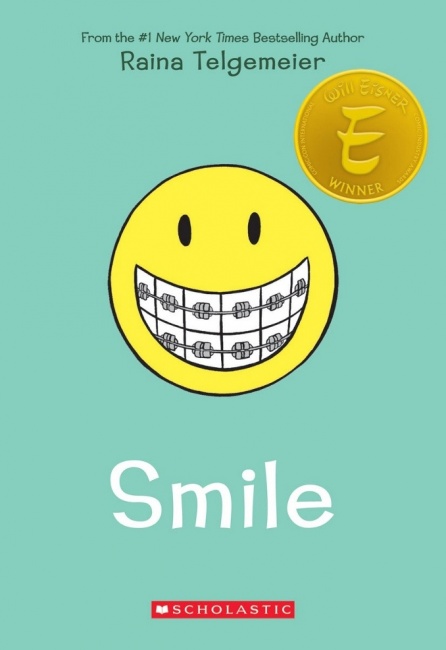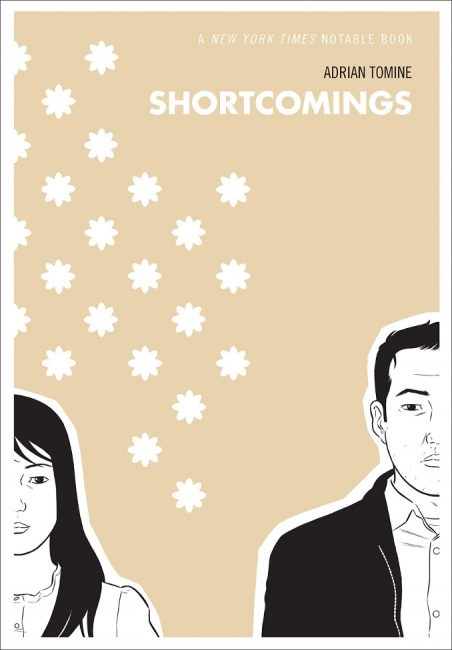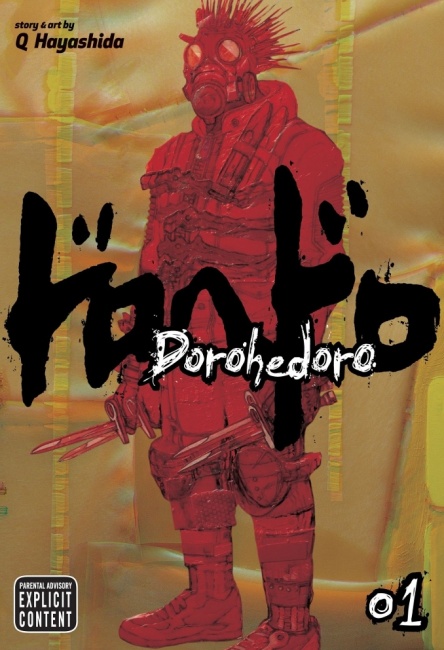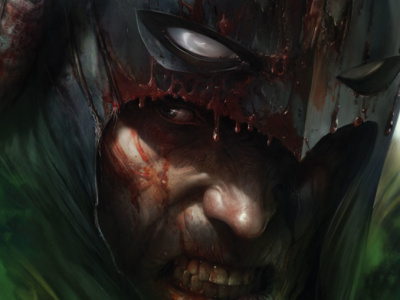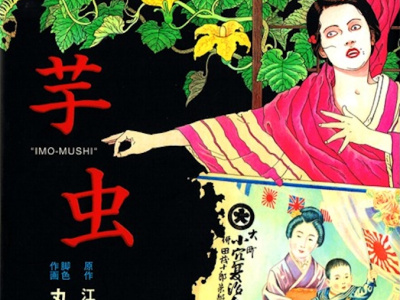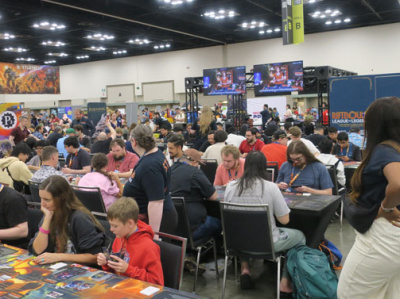My earliest introduction to comics was through Saturday morning cartoons featuring Superman and Spider-Man, then joyously discovering that the adventures of these characters were published monthly and available at most newsstands. I don’t think that experience was unique among my generation. There’s been a long and fruitful symbiotic relationship between kids comics and animation stretching back to the days of Disney and Max Fleischer shorts and forward to the current day, whether the subject matter was superheroes, funny animals or licensed characters.
Today we are fifteen years into a boom in graphic novels for younger readers, with popular titles selling staggering numbers of print copies. Millions of younger Millennials and Gen Zers have grown up reading the work of Gene Luen Yang, Raina Telgemeier, Kazu Kibuishi, Dav Pilkey and Jerry Craft, to name a few. And how many of those authors benefited from media air cover in the form of cartoons, animated features or live action programming? So far, hardly any.
There’s reason to believe that is starting to change. Pilkey’s Dog Man was recently picked up for development as an animated feature from Dreamworks. Mike Maihack’s Cleopatra in Space ran three seasons as an animated series produced by Dreamworks for NBC’s Peacock service. Work by several of the top literary kids comics creators are reportedly under option and close to being announced as official projects. If history is any guide, those efforts are likely to pour gasoline on the fires of an already super-hot market and drive even more attention and money into the kids comics segment.
What’s the holdup? Considering how quickly prose books in the middle grade and young adult categories can get picked up and brought to the screen, Hollywood seems like it has its feet stuck in cement when it comes to kids graphic novels. Raina was a sensation in 2011. Here we are 10 years later: where’s the Smile movie?
A couple of factors conspire to jam the conveyor belt. First, obviously, is money. Hollywood has been slow to see the same franchise value in independent literary kids graphic novels as they see in other kinds of prose or conventional comics properties, and creators are hesitant to take deals that aren’t as rewarding.
Another factor is that the creators, as owners and stewards of their successful works, are not eager to cede creative control or take options that don’t provide them with executive production and oversight over their babies.
Ordinarily, that can be solved by a star from the show business world championing a project because they are a fan of the work and seen as an ally by the creator. One case of this was the recent announcement of Fresh Off the Boat and WandaVision star Randall Park taking the lead in adapting Adrian Tomine’s Shortcomings, a move embraced by Tomine because of Park’s obvious reverence and sympathy for the work.
When stars attach themselves to a work, it’s usually because they see themselves in the starring role. With prose novels, readers have some latitude in visualizing characters from the books, which means that a relatively wide range of actors could plausibly be cast. But kids books generally feature kids as protagonists, limiting adults to the roles of parents, foils or villains, which may lessen the appeal. And if you’re talking about animation, acting as voice talent isn’t quite the same as a star turn in front of the camera in a live-action film.
Finally, there’s the well-known issue with kid-centric animated programming: producers believe there has to be a licensed toy angle. That’s easy enough to do with corporate-owned franchises that are already prime licensing vehicles. It may be tricky or impossible with literary titles owned and controlled by creators who may not want to see their work festooning action figures, lunchboxes and happy meals just because there is money on the table.
Risks and Rewards. All this sand in the gears is unfortunate because there are real upsides to media adaptation. It’s become accepted wisdom that big screen superhero movies don’t move the needle much on comics sales – in part, because the superhero comics audience and its sales channels are pretty specialized. But that’s not likely to be the case with movies and cartoons based on kids comics.
You only have to look to the manga market to see the evidence. According to NPD BookScan data presented at the ICv2 conferences in 2019 and 2020, sales of top manga titles such as My Hero Academia and Attack on Titan are closely correlated with the availability and promotion of the anime series on various streaming platforms (see "Pro: Consumers, Comics, and Covid-19"). This even affects back catalog titles. According to VIZ Media Vice President Publishing Sales Kevin Hamric, "Dorohedoro, which has been a long-running series from years past, shows up on Netflix, and all of the sudden we've got to reprint every volume” (see "Manga In The Covid Era: Binge Reading, Box Sets, Volume 1s, More"). Fans see the anime, then go out, usually to bookstores or online services, to buy the manga.
Even within the world of literary comics for teens and young adults, we have a pretty strong model for how this works. Marjane Satrapi’s 2006 graphic novel Persepolis was a widely-acclaimed best seller when it was released as a book. Following the extremely faithful, well-executed animated feature film, it became a perennial classic and a mainstay on academic and library recommendation lists for the past 15 years. Peanuts arguably owes as much or more of its enduring cultural cache to the ubiquity and beloved status of A Charlie Brown Christmas and other animated specials as to Charles Schultz’s genius as a cartoonist.
1+1 = 11. The media adaptations of the great younger readers and YA comics classics of this generation are a slow fuse leading to a large pile of dynamite. The competition for blue chip content brought on by streaming wars is gradually bringing studios closer to meeting the financial and creative requirements of the biggest names in kids comics. We are rumored to be on the brink of a couple of major announcements in this area that may tip off a further gold rush. FOMO is a powerful drug, especially in Hollywood.
Once these projects start coming to light – which could take a while, especially if we’re talking about animated features or series – it seems clear to me it will trigger a virtuous circle for the whole category. The bigger media footprint will help establish quality properties even more firmly in the minds of parents, educators and influencers, and make it easier for champions to win battles in schools and libraries. It will create even more demand for the books, the same effect we already see with manga.
The long lead time to develop some of the early classics also means that kids who were tweens in the aughts will now be entering the nostalgic phase of young adulthood where they are eager to recapture cherished moments of childhood. Some might be starting families themselves and want to share their favorites with their own young kids.
Comics for young readers, middle grade, and YA pulled themselves up by the bootstraps, establishing a presence on the bookshelf thanks to the creative chops of a group of talented creators and the willingness of publishers, especially Scholastic’s Graphix imprint, to go all in on building a market for them. They’ve become one of the great publishing success stories, not just in comics but for the entire book trade, purely on the basis of what’s between the covers.
Now this juggernaut is about to get a big boost from big media. If the results on screen are any good at all, it’s looking like the 20s will be roaring for this segment of the business.
The opinions expressed in this column are solely those of the writer, and do not necessarily reflect the views of the editorial staff of ICv2.com.
Rob Salkowitz (@robsalk) is the author of Comic-Con and the Business of Pop Culture.
Click here for more articles on kids comics and graphic novels, for ICv2 Kids Week!

Column by Rob Salkowitz
Posted by Rob Salkowitz on April 26, 2021 @ 2:58 pm CT
MORE COMICS
From Dynamite Entertainment
August 8, 2025
Here's a preview of Space Ghost #1, published by Dynamite Entertainment.
Dark, Erotic Manga Based on Short Story by Edogawa Rampo
August 8, 2025
Maruo brings his signature “erotic grotesque” style to a dark tale by writer Edogawa Rampo.
MORE COLUMNS
Column by Jeffrey Dohm-Sanchez
August 7, 2025
ICv2 Managing Editor Jeffrey Dohm-Sanchez lays out the hotness of Gen Con 2025.
Column by Rob Salkowitz
August 5, 2025
In this week's column by Rob Salkowitz, he looks at the industry's biggest show, held in the midst of some existential issues.




